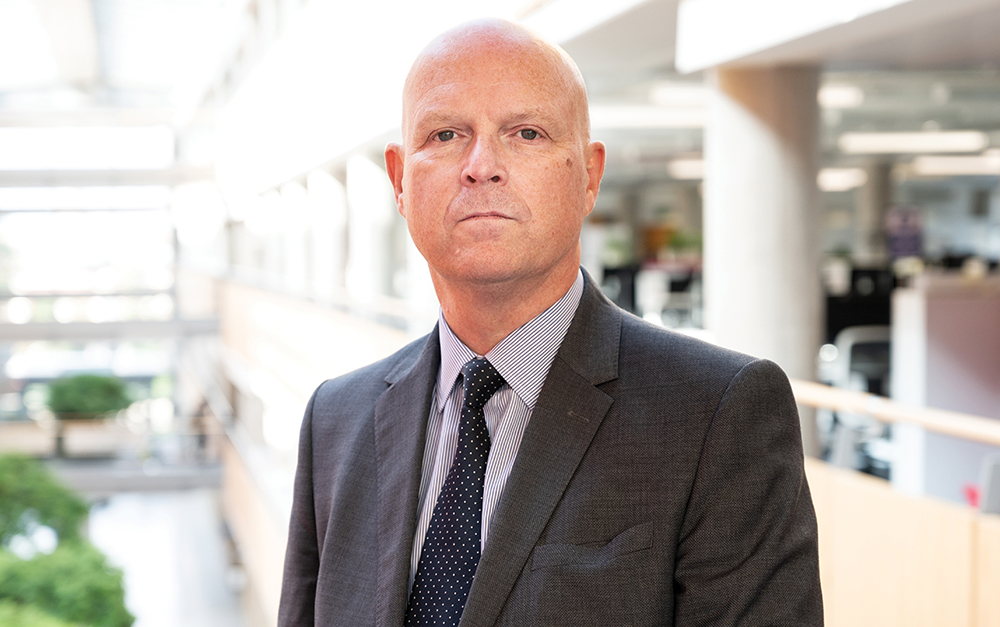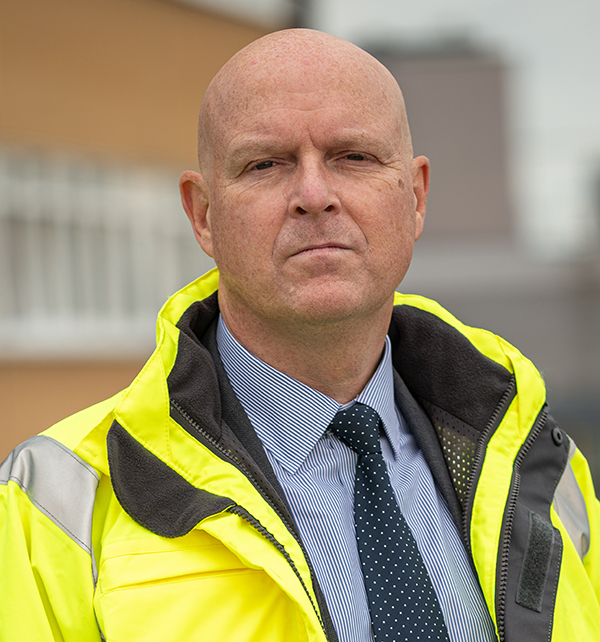
As the Building Safety Bill progresses through Parliament, chief inspector of buildings Peter Baker tells Neil Gerrard why construction professionals need to start preparing for change now.
After the challenges of the last 18 months, 2023 may feel a long way off. But chief inspector of buildings Peter Baker is keen to remind built environment professionals that’s the year the new building safety regulatory regime will arrive – and with it, many changes for the industry.
Baker, a veteran regulator at the Health and Safety Executive (HSE), was appointed to his new role in early 2021. Since then, he has been establishing a new Building Safety Regulator (BSR), following the Grenfell Tower disaster and recommendations in Dame Judith Hackitt’s Building a Safer Future report.
“HSE has been involved with the government’s response to Grenfell from the day after the event itself,” says Baker. “We also started to get involved in the government’s reforms when Dame Judith Hackitt started her review. Dame Judith was the chair of the HSE so it was logical that we would get involved to support the review and to help the Ministry for Housing, Communities and Local Government (MHCLG) to decide how best to respond.”
In her recommendations, Hackitt suggested that HSE should become part of the future regulation of high-rise residential buildings (HRRBs), with the secretary of state recommending in January of last year that the HSE house the new BSR.
The BSR has already taken on board around 100 people. When the regulator becomes fully operational, that could rise to as many as 700.
The fine detail of its role depends on any amendments made to the Building Safety Bill. Baker expects its remit to be broad. While its focus will be on providing a new regulatory regime for HRRBs, based on a series of gateways (see box), other functions will cut right across the built environment.
The two other broad limbs to the BSR’s functions will be competence and oversight. The BSR’s role in promoting competence will apply to the whole built environment, not just HRRBs.

Peter Baker CV
Feb 2021-present: Chief inspector of buildings
May 2020-Jan 2021: Director, building safety and construction, HSE
Oct 2018-May 2020: Director, building safety programme response, HSE
April 2015-Sept 2018: Chief inspector of construction, HSE
Education: BSc Chemistry, University of Sheffield; Post-graduate diploma, occupational safety and health, Aston University
“This is all to do with the competence steering groups’ and BSI’s work on competency frameworks,” Baker explains. “The BSR will be responsible for holding the ring on all of that competency work and making sure that industry is improving the competence of everyone involved in design and construction.”
Performance and standards
The BSR will also be responsible for the performance and standards of building control bodies, a “regulator of regulators”, as Baker puts it. The BSR itself will be the building control body for HRRBs. He explains: “We will be establishing the minimum standard of professionalism, competence and performance of all building control bodies whether they are local authorities or approved inspectors. The aim of that is to have a confidence in the building control community, whoever you use.”
Oversight is another part of its role, responsibility passing from the MHCLG to the BSR for maintaining the Approved Documents, identifying technical standards, working with industry and research. “We will have a role in keeping an eye on the whole system. Where it is not working, we will make recommendations to the secretary of state to improve the system,” Baker says.
Regulations first
Baker expects two significant changes to the design and construction process for HRRBs.
First, there will be more engagement with the BSR at the early stages about how the project will comply with Building Regulations. Contractors and developers will have to demonstrate how they will manage the construction so that the building still complies at the end of the build process. If the BSR isn’t convinced, the building won’t be allowed to move into the construction phase.
Second, fire and rescue services will become part of a multidisciplinary team and their views will be taken into account when decisions are made as to whether a building can proceed or not.
“We will have a role in keeping an eye on the whole system. Where it is not working, we will make recommendations to the secretary of state to improve the system.”
During the design and construction phase, the BSR will have enforcement tools similar to those that building control bodies possess, including enforcement notices to have work corrected. Projects will not move through the gateways if dutyholders can’t demonstrate competence.
Similarly, owners and landlords of occupied buildings will have to register the building as well as applying for a safety certificate and producing a safety case before buildings can be occupied.
As the Building Safety Bill progresses through parliament, the BSR is planning to step up engagement with the industry. “We want to get the industry talking about what needs to change and what it is going to do, rather than just what the regulator and the government are going to do,” Baker says. “The future will be here before you know it.”
The building safety gateway regime
Gateway 1: Part of the existing planning application stage for all higher-risk buildings (as of 1 August 2021). Applicants need to submit a fire statement, demonstrating they have considered fire safety issues. The HSE will be a statutory consultee.
Gateway 2: Prior to construction work beginning on higher-risk buildings and replaces the current ‘deposit of full plans’ stage in the Building Regulations. Clients will apply to the regulator via a building control application containing their full design intention. Provides a ‘hard stop’, where construction cannot begin without regulator approval.
Construction stage (between Gateways 2 and 3): During construction of higher-risk buildings, dutyholders must comply with any inspections deemed necessary by the regulator. ‘Major changes’ to designs will need to be approved before they can be implemented. ‘Notifiable changes’ that may impact fire and structural safety must not be implemented until after a prescribed period, to allow the regulator time to take action if required.
Gateway 3: Takes place at completion/final certificate stage, when building work is completed but prior to occupation of the building. The client, supported by dutyholders, must submit to the regulator information on the final as-built building. Once satisfied, the regulator will issue a completion certificate for all or part of the building.











